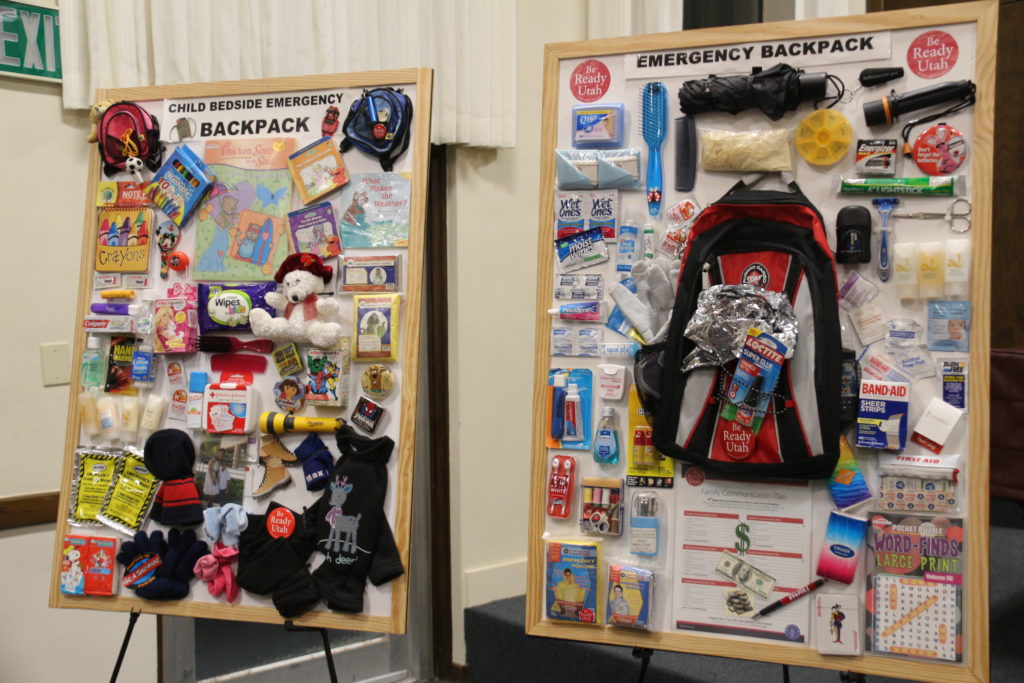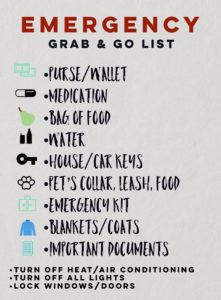
Maralin Hoff calls herself “Utah’s Earthquake Lady.” She is also a speaker for a preparedness organization called Be Ready Utah.
After experiencing an earthquake in 1962 while living in Salt Lake City, Hoff said she realized living in Utah didn’t make her immune to natural disasters.
“The worst movements are the jolts. They will throw things right at you,” Hoff said. “The shaking is only seconds, but those few seconds can feel like forever.”
Hoff said she believes the way to combat fear is knowledge. In early November 2018, she partnered with the Provo Orem Community Emergency Response Team to teach communities how to prepare themselves and their homes for earthquakes.

Hoff said she believes every member of a family should have their own emergency preparedness kit. She suggested rotating the kits every six months to make sure no items expire and that the packed clothing is weather appropriate.
Hoff warned residents to be careful of mice and to make sure any food storage is packed in air tight containers to keep it safe and sanitary.
According to Hoff, starting family disaster kits doesn’t have to be expensive.
“Start a new tradition. Give your family something to add to their emergency kit, their food storage, their water storage,” Hoff said.
Hoff said there are simple things anyone can do in their home to make it safer. These things can be as simple as taking the time to store heavy items, like china, closer to the ground, or securing furniture and other hanging items to the wall. Hoff also suggested placing rubber-grip liners under heavy items to keep them from falling off shelves during an earthquake.
BYU geology professor Ron Harris has been using seismology to research earthquakes for 30 years. According to Harris, the damage risk to the area around Utah’s Wasatch fault line is close to the damage risk to areas around the more active San Andreas fault line in California.
This is because California has prepared for large earthquakes while Utah has not, he said.
“The Wasatch fault is inclined under the Utah and Salt Lake City valleys, which means the earthquake will be close to the surface and directly beneath the built environment. But unlike California, most of the buildings in Utah are not built to seismic code,” Harris said.
In order to prepare, Utah must fix structural risks by replacing buildings built before the Uniform Building Code was implemented in 1985, or by retrofitting them to meet those regulations, he said.
According to Harris, Utah’s structural risks is a reason many historic buildings owned by The Church of Jesus Christ of Latter-day Saints were recently renovated.
Harris said one of Utah’s large structural issues are the schools built along the Wasatch front, as 50 percent of them are not up to the standards addressed in the Uniform Building Code.
Another way to prepare for earthquakes, Harris explained, is by fixing non-structural hazards, or securing objects that may fall.
“Earthquakes don’t kill people. Falling objects or buildings do,” Harris said.
During earthquakes the official recommendation is to “drop, cover and hold on,” according to the Earthquake Country Alliance. It is no longer recommended to stand in doorways, as doorways in modern homes do not provide the necessary protection and may collapse.




